
The Virtual Boy is a 32-bit tabletop portable video game console developed and manufactured by Nintendo. Released in 1995, it was marketed as the first console capable of displaying stereoscopic "3D" graphics. The player uses the console like a head-mounted display, placing the head against the eyepiece to see a red monochrome display. The games use a parallax effect to create the illusion of depth. Sales failed to meet targets, and Nintendo ceased distribution and game development in 1996, having released only 22 games for the system.
Star Fox is an arcade style rail shooter and third person action-adventure video game series created by Shigeru Miyamoto, produced and published by Nintendo. The games follow the Star Fox combat team of anthropomorphic animals, led by chief protagonist Fox McCloud. Gameplay involves many adventures around the Lylat planetary system in the futuristic Arwing fighter aircraft, in other vehicles, and on foot. The original Star Fox (1993) is a forward-scrolling 3D rail shooter, but later games add more directional freedom.

Star Fox 64, known as Lylat Wars in the PAL regions, is a 1997 3D rail shooter video game developed and published by Nintendo for the Nintendo 64. It is the second installment in the Star Fox series and a reboot of the original Star Fox for the Super Nintendo Entertainment System.
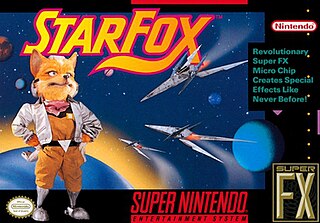
Star Fox, known as Starwing in PAL regions, is a rail shooter video game developed by Nintendo and Argonaut Software, and published by Nintendo for the Super Nintendo Entertainment System. The first game in the Star Fox series, the story follows Fox McCloud and the rest of the Star Fox team defending their homeworld of Corneria against the invading forces of Andross.

Star Fox Adventures is a 2002 action-adventure game developed by Rare and published by Nintendo. The game had a long development cycle starting in 1997. Originally developed as Dinosaur Planet with Rare-created characters as the protagonists, Nintendo producer Shigeru Miyamoto convinced Rare to redesign the game as part of the Star Fox franchise. Its planned release on the Nintendo 64 was cancelled, with development ultimately shifting forward one hardware generation to the GameCube.

Xevious is a vertically scrolling shooter arcade video game developed and published by Namco in 1982. It was released in Japan by Namco and in North America by Atari, Inc. Controlling the Solvalou starship, the player attacks Xevious forces before they destroy all of mankind. The Solvalou has two weapons at its disposal: a zapper to destroy flying craft, and a blaster to bomb ground installations and enemies. It runs on the Namco Galaga arcade system.

Star Fox 2 is a rail shooter video game developed by Nintendo and Argonaut Software and published by Nintendo. Originally developed for the Super Nintendo Entertainment System, it was completed in 1995 but did not see an official release until 2017 on the Super NES Classic Edition.

The Super FX is a coprocessor on the Graphics Support Unit (GSU) added to select Super Nintendo Entertainment System (SNES) video game cartridges, primarily to facilitate advanced 2D and 3D graphics. The Super FX chip was designed by Argonaut Games, who also co-developed the 3D space rail shooter video game Star Fox with Nintendo to demonstrate the additional polygon rendering capabilities that the chip had introduced to the SNES.

Red Alarm is a 1995 shoot 'em up video game developed by T&E Soft and published by Nintendo. Released as a Virtual Boy launch game, it requires the player to pilot a space fighter and defeat the army of a malevolent artificial intelligence called KAOS. The game takes inspiration from the 1993 title Star Fox, and it is one of the few third-party titles for the Virtual Boy. Unlike most of the console's games, Red Alarm features three-dimensional (3D) polygonal graphics. However, hardware constraints limited the visuals to bare wire-frame models, similar to those of the 1980 arcade game Battlezone. Reviewers characterized Red Alarm's graphics as confusing, but certain publications praised it as one of the most enjoyable Virtual Boy titles.

Stunt Race FX, known in Japan as Wild Trax, is a racing video game developed by Nintendo and Argonaut Software and published by Nintendo for the Super Nintendo Entertainment System. It is the second game to use the 3D-centric Super FX powered GSU-1.

Mario Clash is a video game produced by Nintendo in 1995 for the Virtual Boy. It is the first stereoscopic 3D Mario game, and a 3D reimagining of Mario Bros. Reception for the game was mixed.
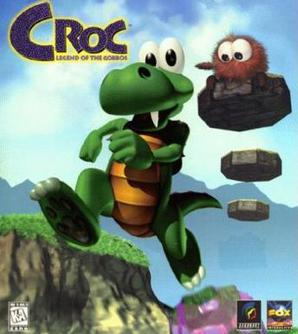
Croc: Legend of the Gobbos is a platform game developed by Argonaut Software and published by Fox Interactive. It was released in North America in September 1997 for the Sony PlayStation, and later that year for the Sega Saturn and Microsoft Windows. Taking place in the fictional setting of the Gobbo Valley, Croc: Legend of the Gobbos follows a young crocodile named Croc, who sets out to rescue a group of furry creatures known as Gobbos from the evil magician Baron Dante.

Vertical Force is a 1995 vertically scrolling shooter video game developed and published for the Virtual Boy by Hudson Soft in Japan and by Nintendo in North America. The player controls a starship, the Ragnarok, that must destroy a malfunctioning supercomputer on a human colony planet before it wipes out all of mankind. Gameplay is similar to Hudson's Star Soldier series, featuring power-up items that increase the player's abilities and parallax scrolling. The player can move their ship farther into the background to avoid enemies and obstacles in the way.

Star Fox Command is a shoot 'em up video game, the fifth game in the Star Fox series, published by Nintendo for the Nintendo DS in 2006. Star Fox Command was announced at the E3 2006 conference, under the name Star Fox DS. Command is the first Star Fox game for a handheld, and supports the Nintendo Wi-Fi Connection, making it the first online Star Fox game. The game was re-released for the Wii U Virtual Console service in 2015.
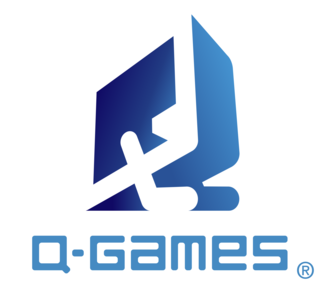
Q-Games, Limited is a video game developer based in Nakagyō-ku, Kyoto, Japan which works closely with both Nintendo and Sony.
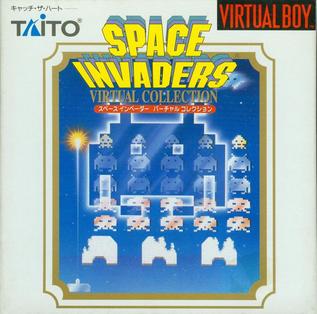
Space Invaders Virtual Collection is a 1995 compilation video game developed and published by Taito in Japan for the Virtual Boy. It includes direct ports of the arcade game Space Invaders (1978) and its direct sequel Space Invaders Part II (1979), alongside 3D remakes that take advantage of the Virtual Boy's hardware capabilities. Both games feature a number of alternative gameplay modes, such as score attack and time attack modes.

The Japanese multinational consumer electronics company Nintendo has developed seven home video game consoles and multiple portable consoles for use with external media, as well as dedicated consoles and other hardware for their consoles. As of September 30, 2021, in addition to Nintendo Switch, Nintendo has sold over 863.07 million hardware units.
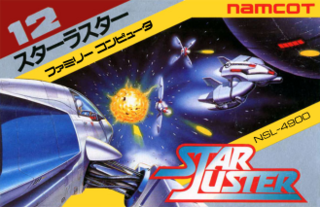
Star Luster is a 1985 space combat simulator video game developed and published by Namco for the Family Computer in Japan. and adapted for play in arcades via the Nintendo VS. System. Star Luster is set in the same universe as Namco's Bosconian (1981), and the gameplay has strong similarities to Atari, Inc.'s Star Raiders from 1979.

Star Fox 64 3D is a 3D rail shooter video game co-developed by Nintendo EAD and Q-Games and published by Nintendo for the Nintendo 3DS. It is a remake of the 1997 video game Star Fox 64 for the Nintendo 64. It was released on July 14, 2011 in Japan, followed by other markets in September.
Giles Goddard is an English video game programmer. He was one of the first Western employees at Nintendo, programming the Mario face in Super Mario 64, and working on titles such as Star Fox, 1080° Snowboarding, and Steel Diver. In 2002, he founded Vitei, a video game developer based in Kyoto, Japan, for which he serves as CEO.

![Translation: "Move the + [cross] button [control pad] up and down to control your speed!" X - ekkusu.png](http://upload.wikimedia.org/wikipedia/en/3/33/X_-_ekkusu.png)

















